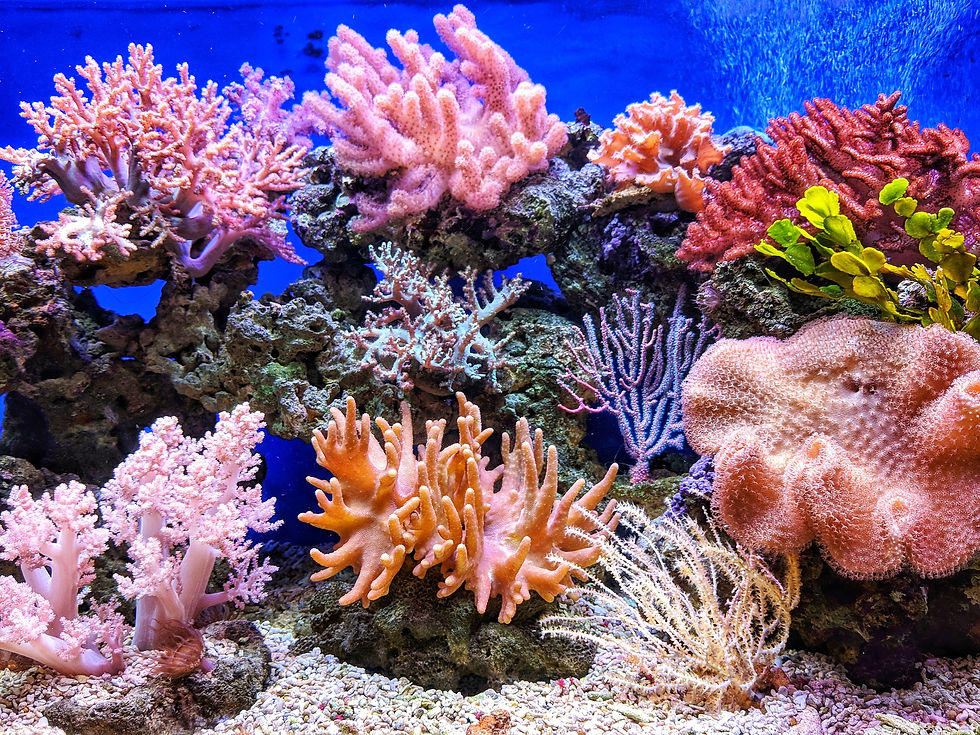Ocean Pollution and Sustainable Fashion
- Zoe Huang

- Jun 17, 2021
- 3 min read
Updated: Aug 16, 2021
Environmental change has become a global concern, as it has direct effects on the ecosystem, biodiversity and availability of resources. Therefore, there has been an increasing amount of people who are becoming more conscious of what they buy. Utilising their power as consumers to raise awareness and prioritise this issue to businesses, to make a change.
The ocean plays an essential role within the environment, covering 71% of the earth’s surface and providing 50-80% of oxygen into the atmosphere. So, it becomes the responsibility of the collective to take action to protect and restore the ocean. For the damage that has already been done and preserving the health of it for the future generation to come.
Contribution to ocean pollution
The interest of the economy encouraged the use of energy and fossil fuel since the Industrial revolution. Consequently, the increase in carbon production resulted in 500 billion tons of carbon dioxide absorbed into the ocean, increasing its acidity by 30%. This alters the habitat which aquatic life depends on, feeding off toxins in the sea beds, decreasing the population of marine life in recent years.
The fashion business is responsible for 10% of the global carbon emission every year, from production to transportation. Synthetic fibres alone take up 1.35% of global oil consumption. Hence, there is a big emphasis on the past few years to reduce the rate of fast fashion.
This a debate between business needs and customer demands. Tension in the concept of consumerism. This feeds into the desire to increase economy and customer satisfaction, instead of improving the shared sense of social and environmental responsibility.
With material production, mixed polyester fabric is hard to separate in the process of recycling, therefore leads to not only more waste in landfills, but also microfibres into the ocean. With the increasing rate of plastic waste washed on to shore annually, up to 8 million tons, of which 236,000 tons are microplastic, it becomes a cycle back to us as consumers. Threatening our own existence with the actions we contributed to.
By 2050, there would be more plastic in the ocean than fishes. On that account, there needs to be a change in lifestyle from individuals, to be mindful as consumers. These are conscious decisions made to have a global positive impact.
Changes in fashion industry
This goal is simple in theory. However, how could the fashion industry become more sustainable, when 65% of clothes worn globally are polymer-based? For businesses, research should take advantage of technological advancement and direct it to find alternatives to change materials used and to change the production process.
Many brands, such as Adidas, Girlfriend Collective and Karün, recycle plastic waste found in the ocean into products, which decrease the impact on the environment. Nevertheless, this does not change the fact or rate of microfibre going into the ocean. Therefore, simply replacing plastic with plastic is a short term solution to landfills, but not necessarily the overall pollution issue.
On the other hand, what has been helping with the carbon footprint aspect of pollution is the growth of businesses utilising local manufacturers. This declines the rate of garment transportation used in the process, from its current stats of 90% of clothes internationally shipped every year. Thus, less packaging and paperwork applied, as well as a reduction in fuel usage.
For the customers, the demand for seasonal changes is a rotational sequence. It restricts the outlook of creating trends and consumerists’ seek of approval. The social pressure to have a sense of belonging generates the craving for fast fashion.
With this view, it crafts subconscious reasoning and misconception that sustainable fashion is displeasing, which could not be more wrong. It is more of a mentality to the subject than only surface-level fashion.
‘Quality over quantity’ is an important statement on this topic. Since sustainability does not equate to the sacrifice of visual aesthetics. Long-lasting, timeless pieces should be seen as investments. Training to build personal style and self-expression through clothing.
This means that the thrive for sustainable fashion enhances individuality, through the pieces to suit personal liking. Hence, the current popularity of thrift shopping and second-hand buys.
Power of consumers
Many people may think how am I able to change the industry with only my own decision? In summary, on your own, you cannot. However, your choice to be sustainable in the clothes you buy influence your social circle. Making them conscious of the factors to consider when purchasing.
This sets off a domino effect creating a community of similar mindset. As the economy chases after consumer demands and behaviour as its first concern, there will be a force pulling them to be more ethical.
It becomes a community effort to push sustainability forward in the fashion industry. A global movement to make a positive change, as social, ethical and environmental progress.
Make the little changes count.



Comments